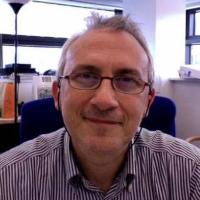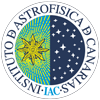Lucio Piccirillo.

Stay at the IAC: 26/05/2014 to 20/06/2014.![]()
Research line: Cosmology and Astroparticles
Dr. Piccirillo gave a Severo Ochoa Seminar at the IAC on 2014 June 12th entitled
How to beat Heisenbergs uncertainty principle.
Dr. Lucio Piccirillo is currently both, professor of Radioastronomy Technology at the School of Physics and Astronomy and member of the Jodrell Bank Centre for Astrophysics, at the University of Manchester (U.K.).
Prof. Piccirillo graduated at the University of Rome in 1985 with a thesis on the measurements of photon noise in the Cosmic Microwave Background radiation. He spent one year as teacher of Digital Electronics at the Italian Airforce and was researcher at the italian Telecommunication Government ministry until 1989. He then moved to the Netherlands as postdoctoral researcher at the European Space Agency and later, in 1991, to the U.S.A. , where he was Assistant Professor at Bartol Research Institute University of Delaware and Visiting Professor at University of Wisconsin. In 2000 he came back to Europe as Senior Lecturer/ Reader at Cardiff University (UK). Dr. Piccirillo is Professor at the University of Manchester since 2006.
His main areas of research concern Experimental Cosmology and development of novel technologies for astronomical instrumentation. He is involved in the detection and characterization of the polarization properties of the Cosmic Microwave Background radiation, radio detection of ultra high energy neutrinos interacting with the Moon surface and radio detection of very high frequency gravitational waves.
He is also involved in the following technology activities:
1. development of high frequency cryogenic low noise amplifiers
2. development of novel electron-beam lithography techniques
3. design and construction of improved sub-Kelvin cryogenic refrigerators to be used in astronomical instruments
4. development of novel quasi-optical interferometers
During his visit to the IAC, Dr. Piccirillo worked mainly with the engineering team of QUIJOTE, in particular with Roger Hoyland, on instrumentation aspects of the project. In particular, he collaborated in the fabrication of the cryostat for the second instrument (TGI-thirty-GHz instrument), in the development of the third instrument (FGI - forty-GHz instrument) and in the conceptual design of future experiments based on interferometry within the project. He also participated in scientific aspects related to the project, as well as in the processing and the analysis of data from MFI (multi-frequency instrument, the first instrument, which was already observing). The results will be published in the Génova-Santos et al. 2015 paper (in preparation).


